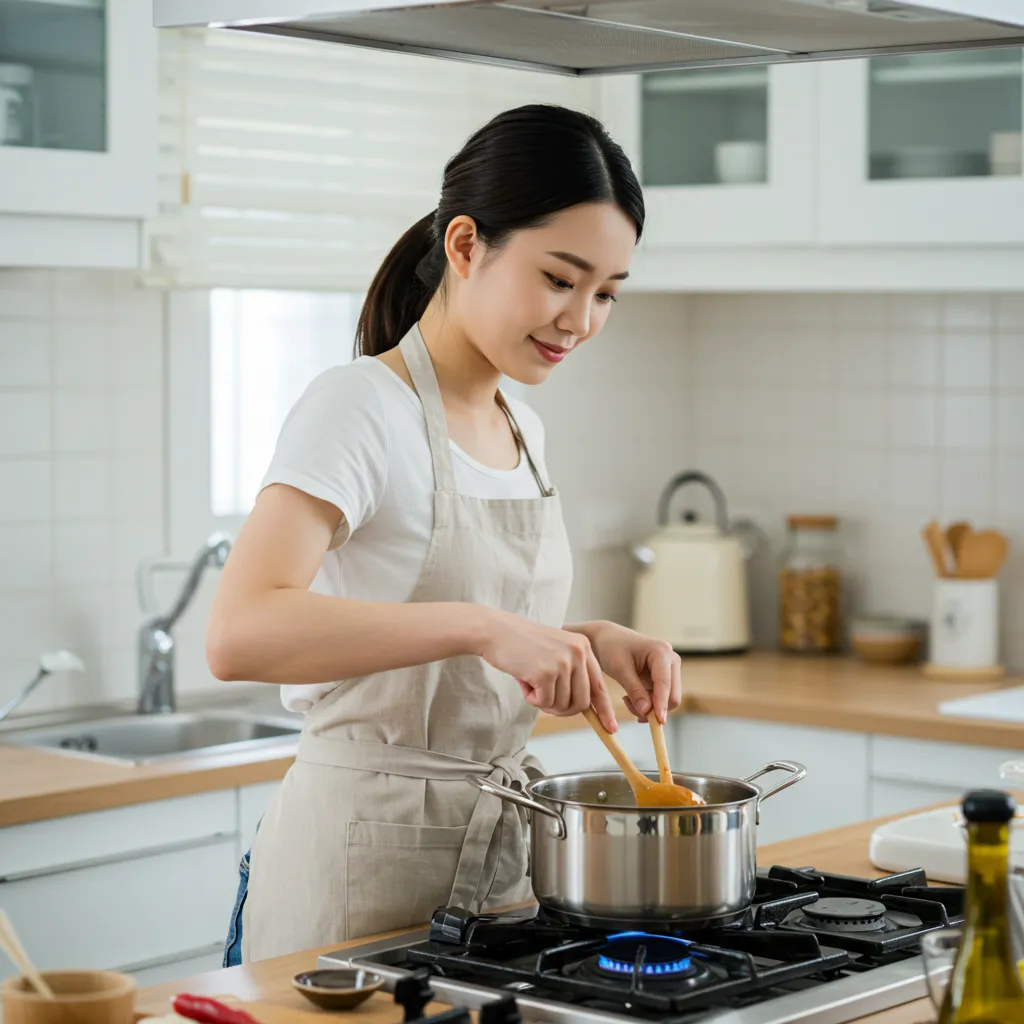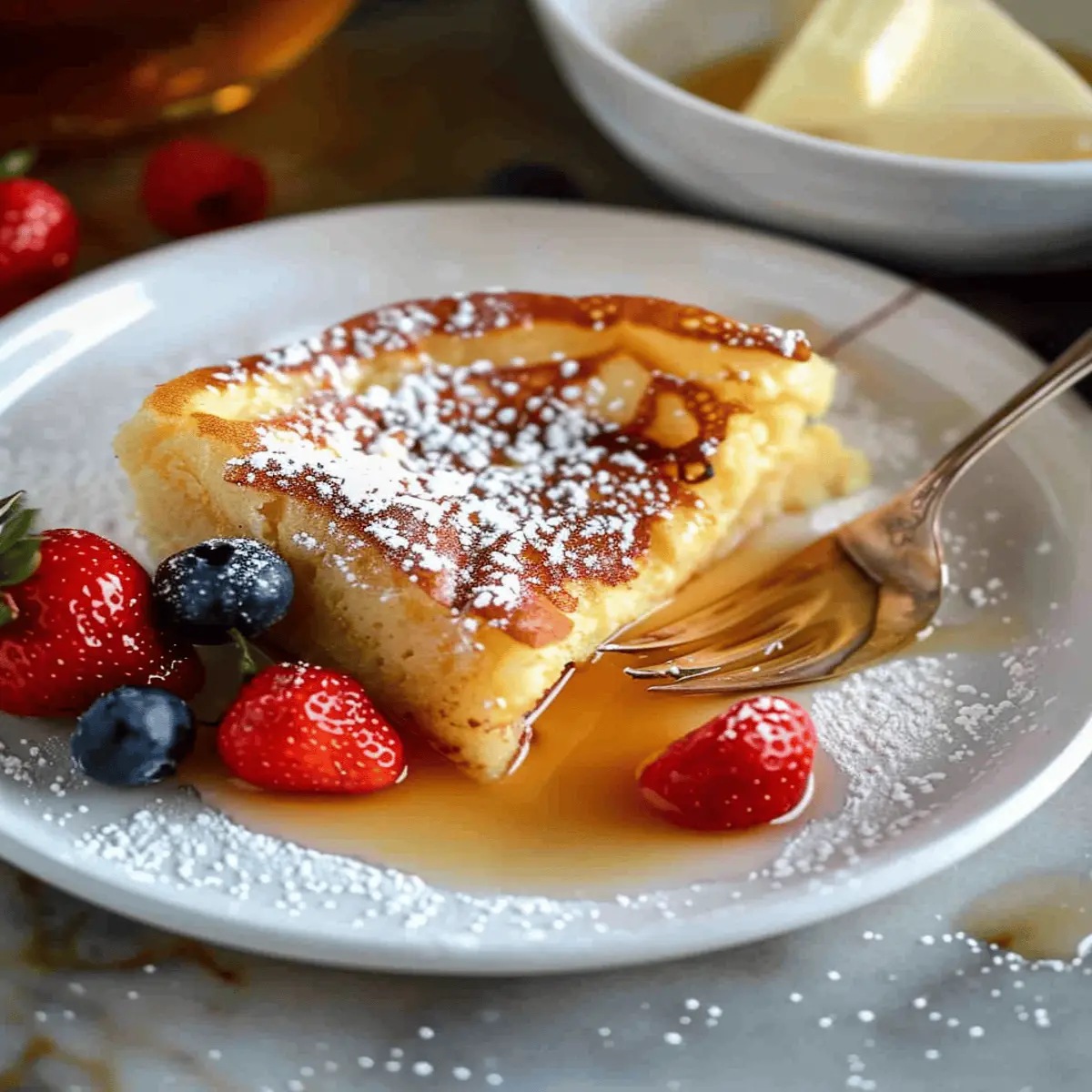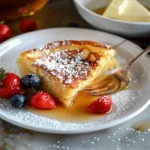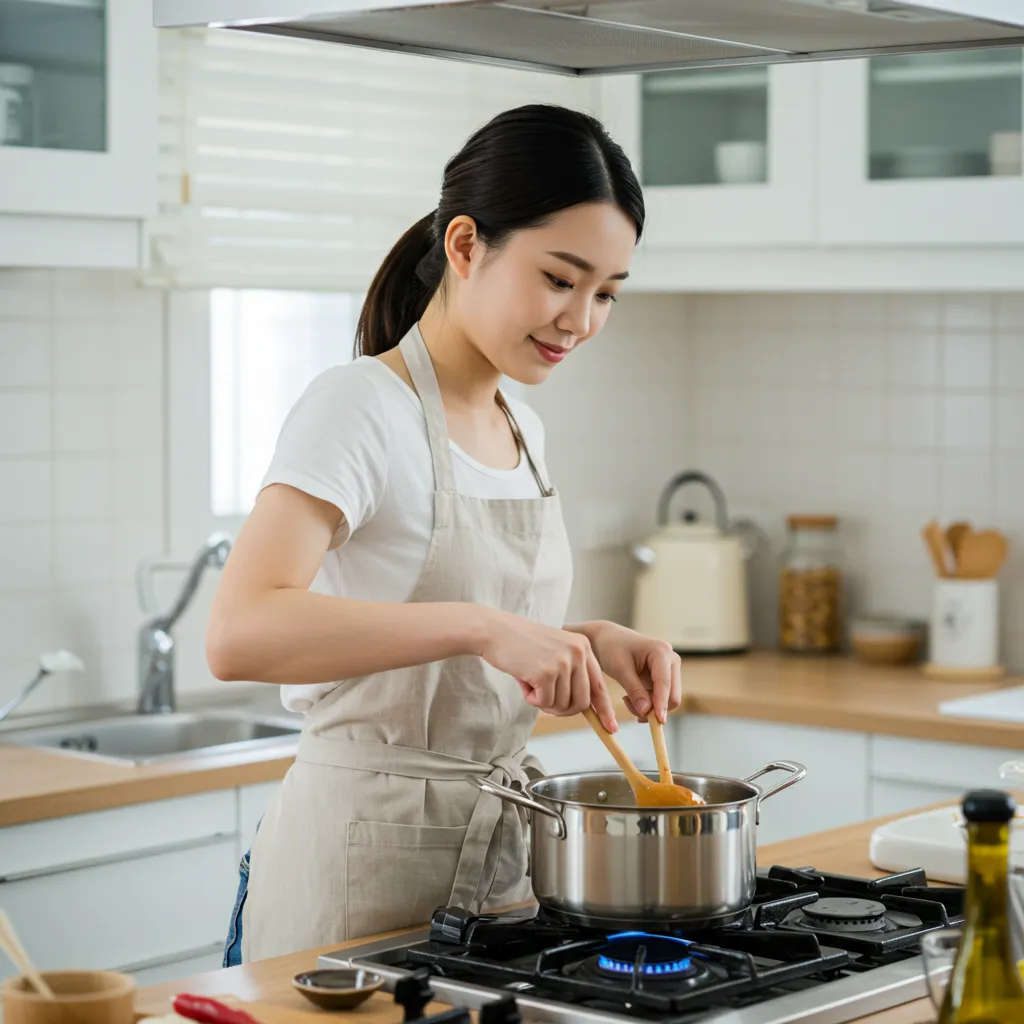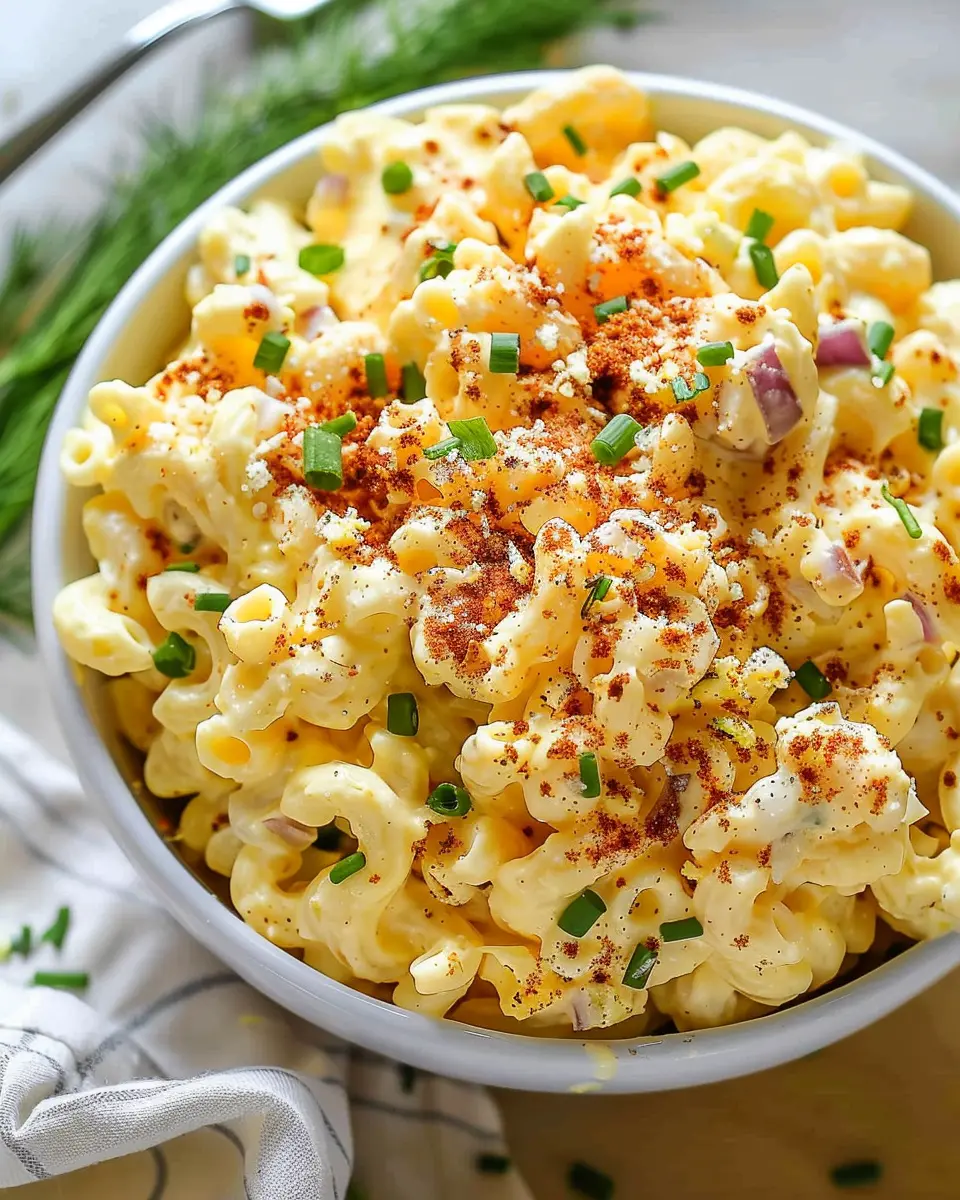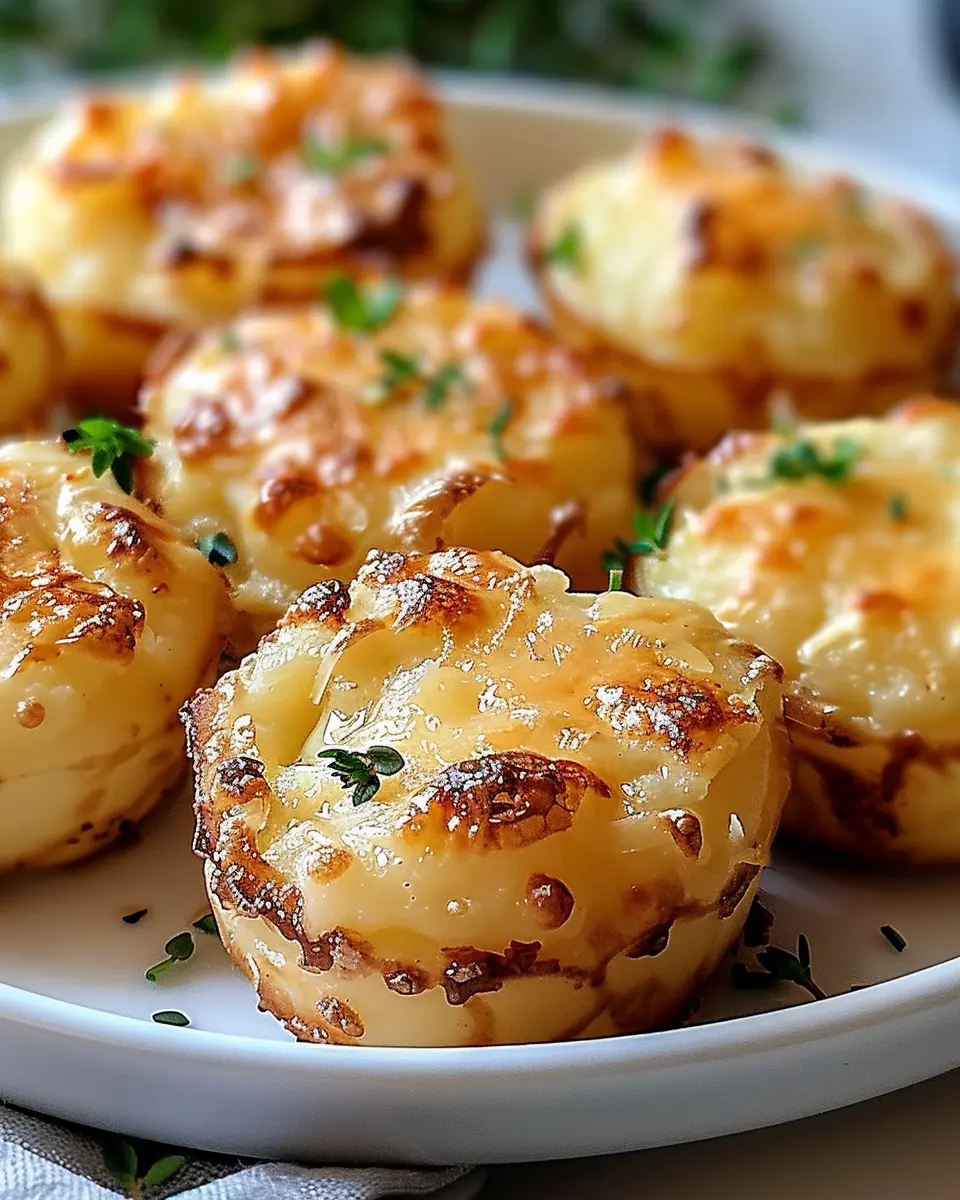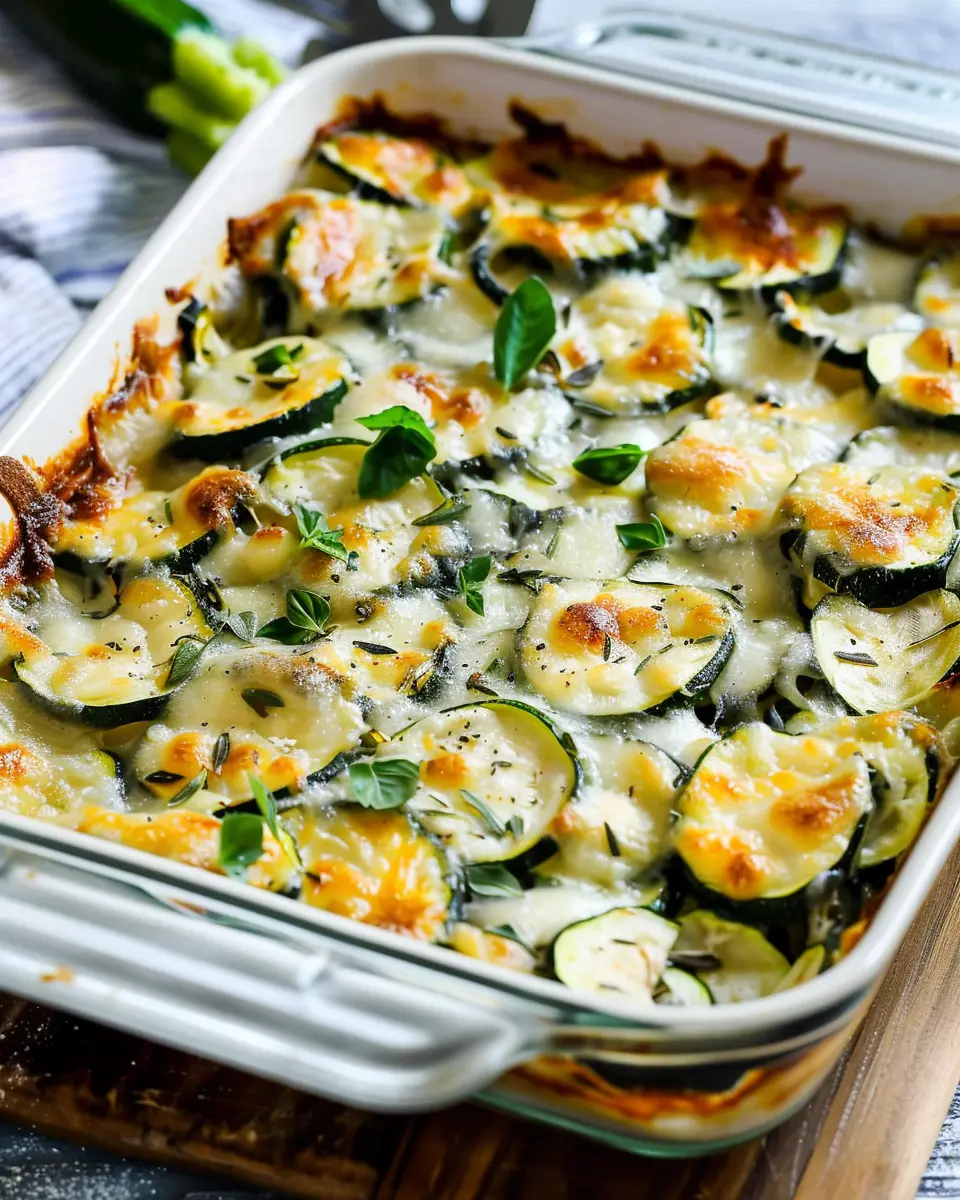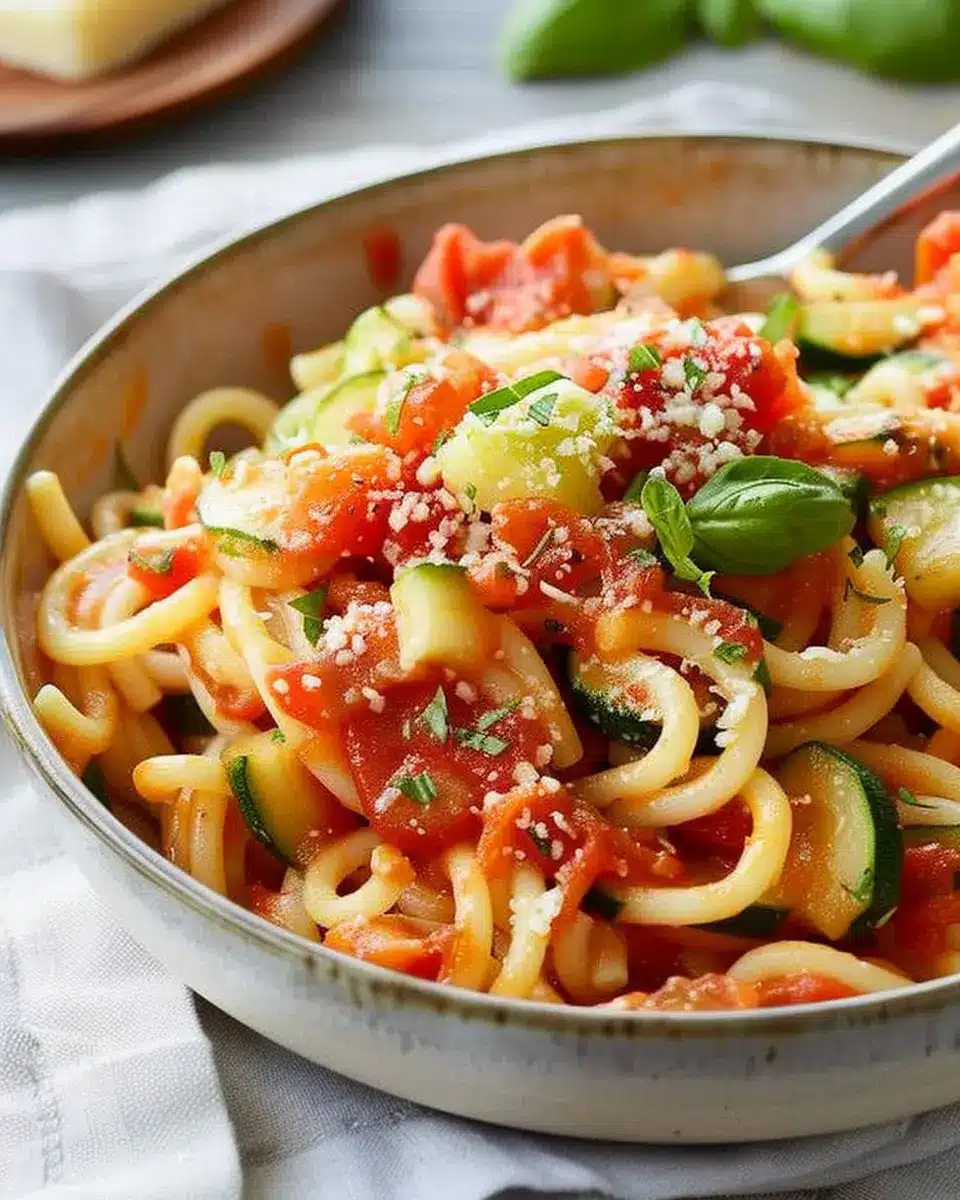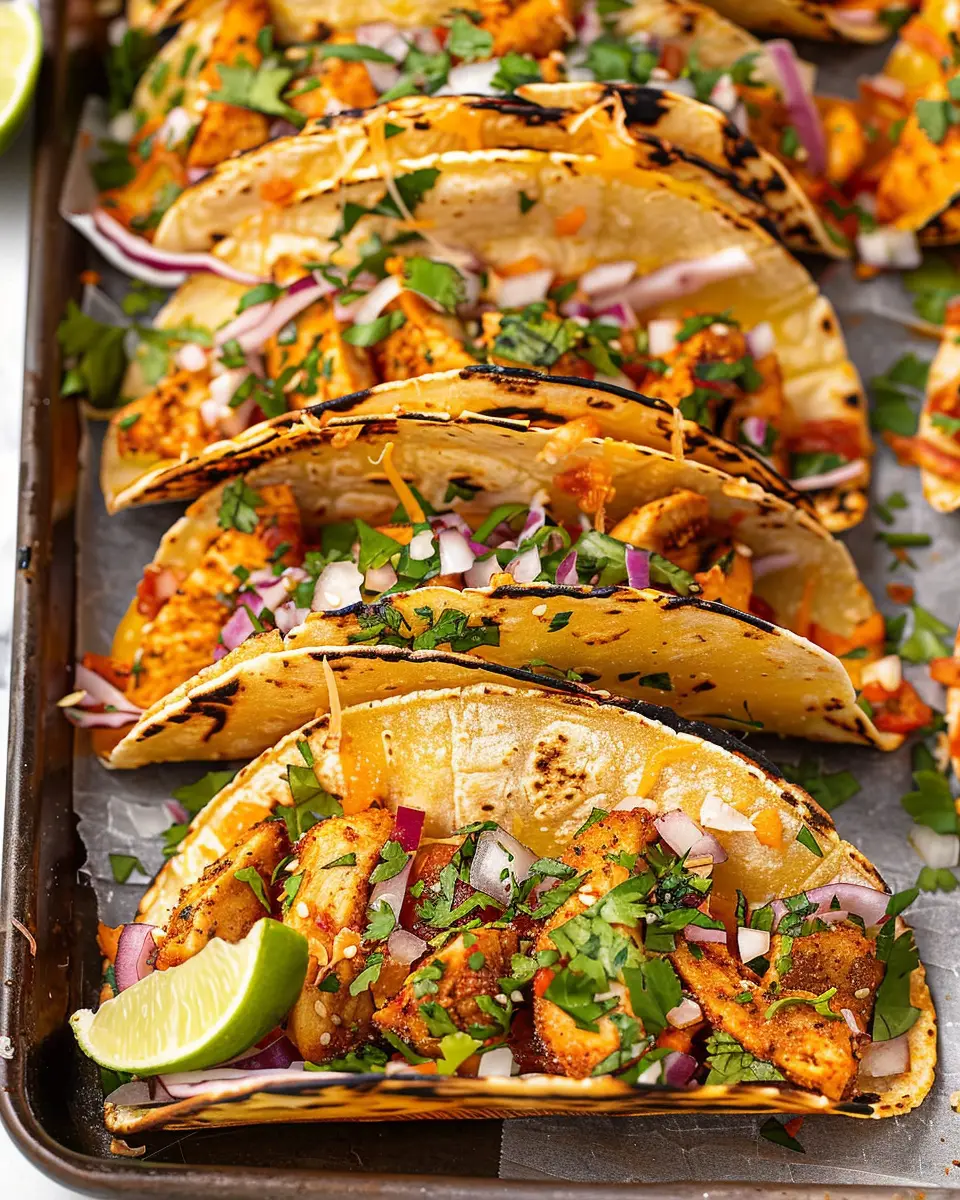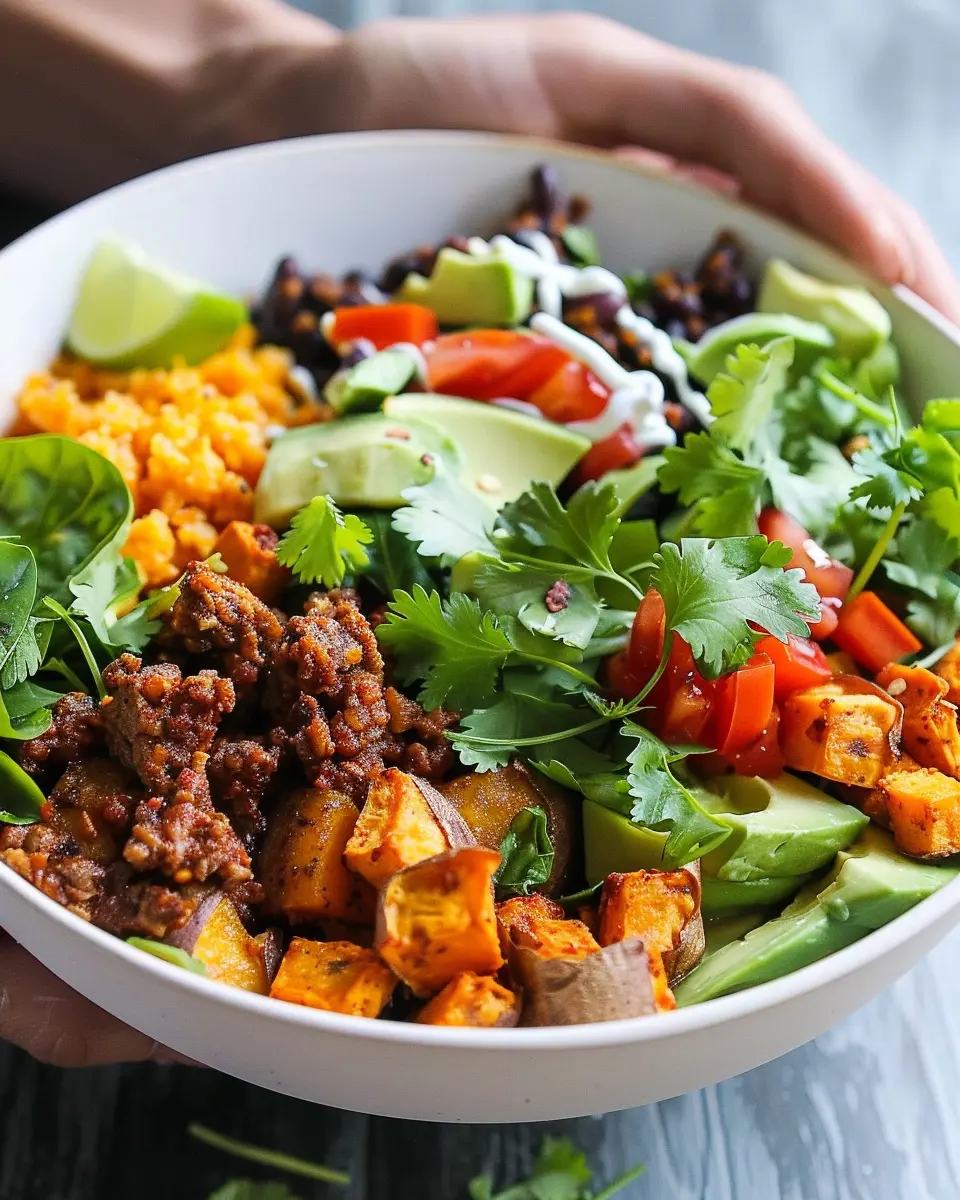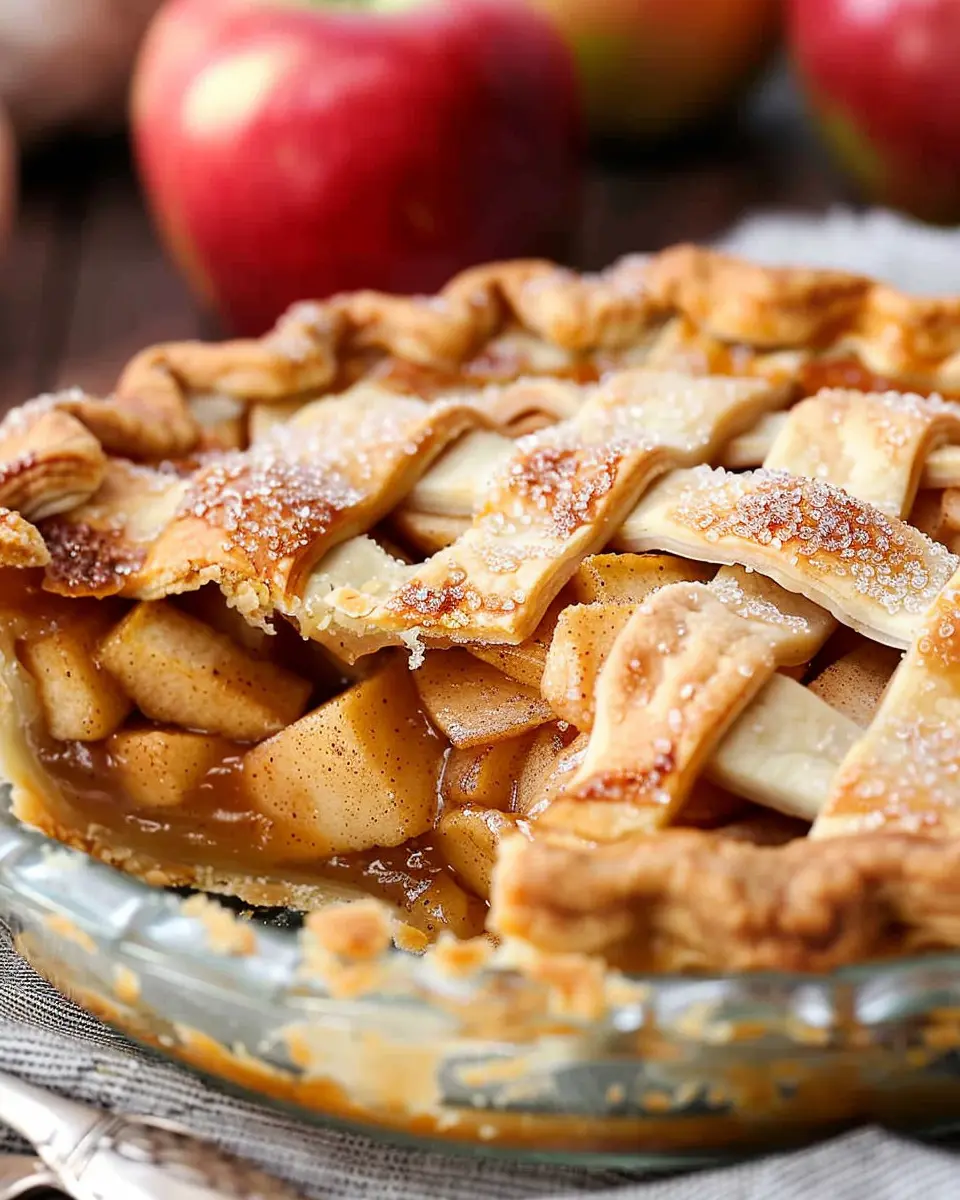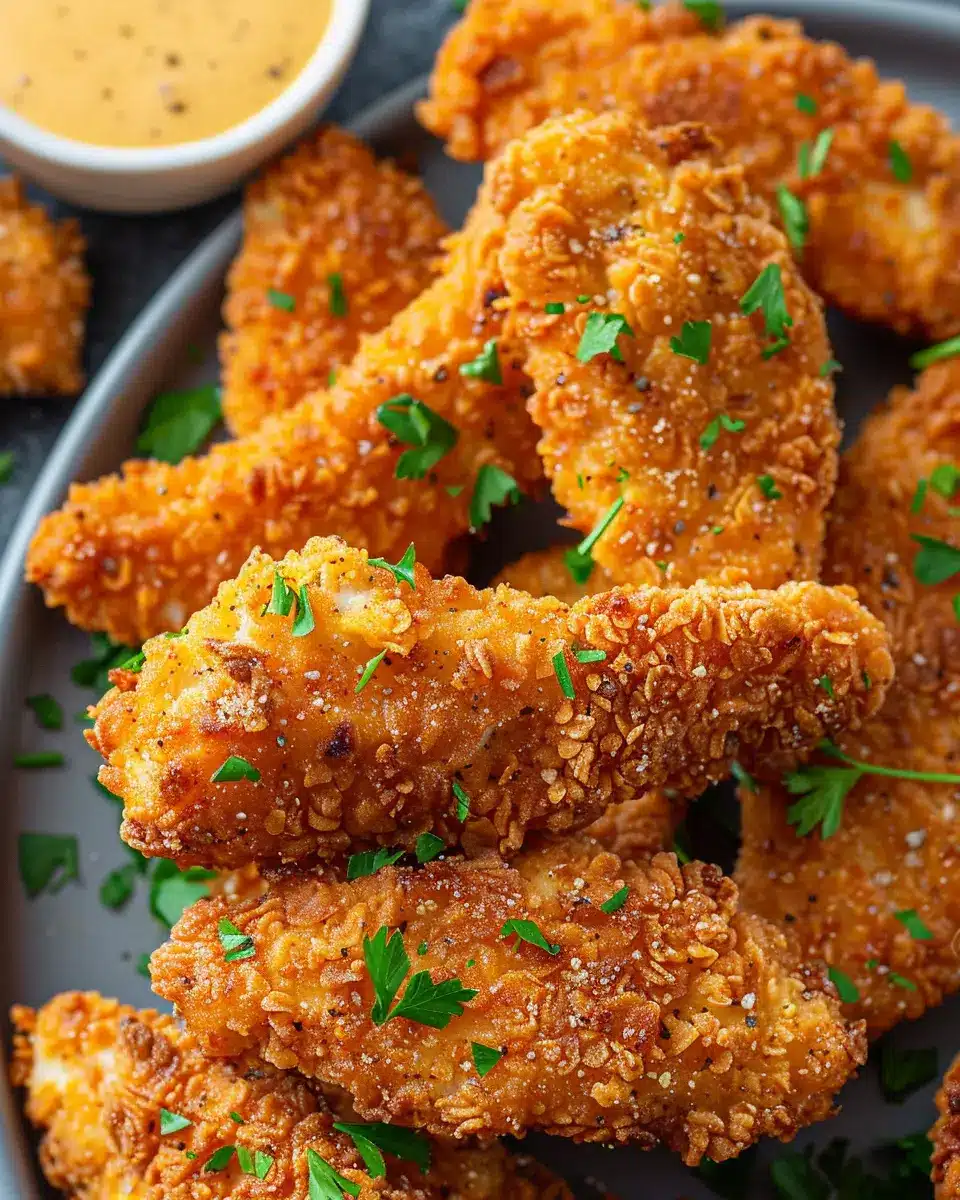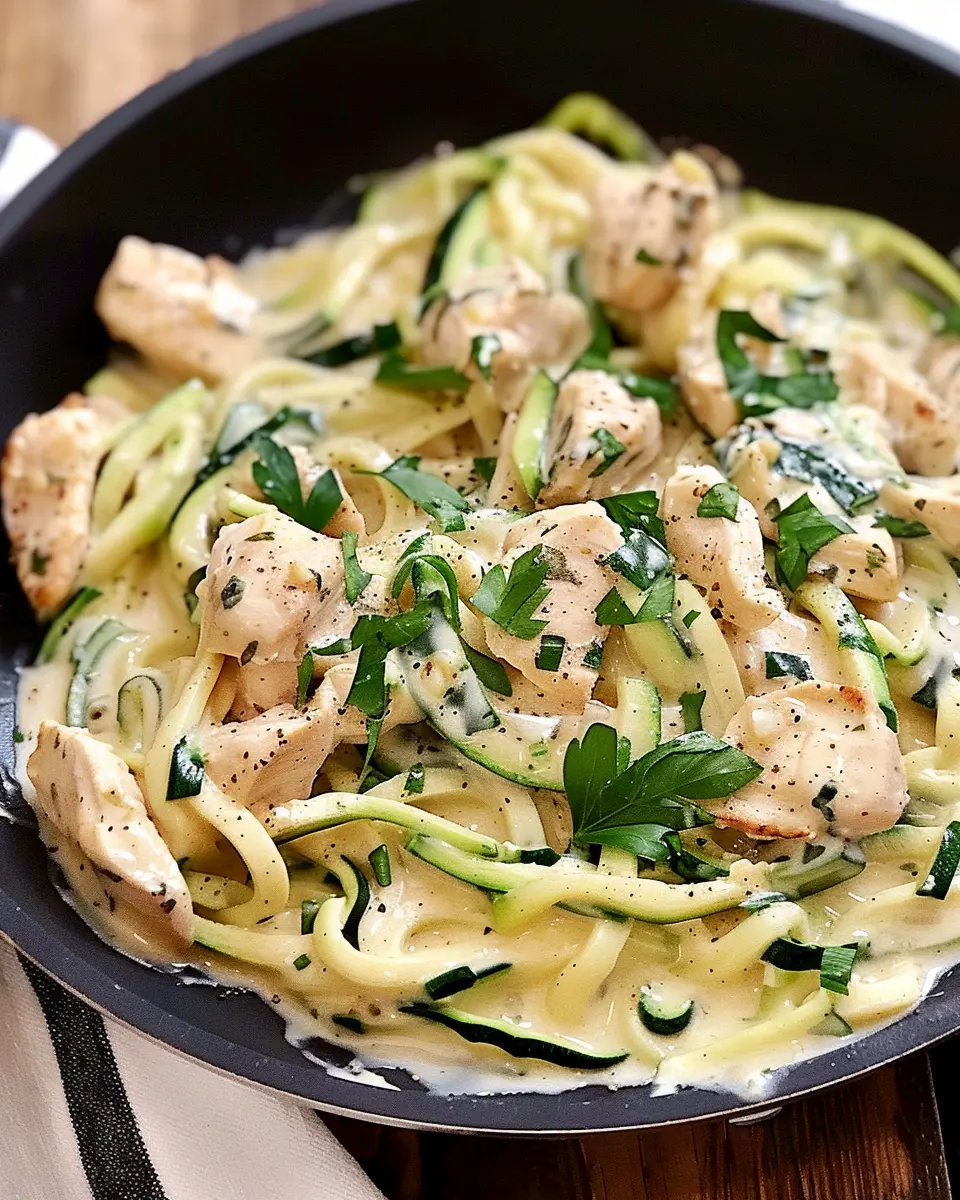Introduction to German Pancakes
If you haven’t tried German pancakes yet, you are in for a delightful treat! With their fluffy, airy texture and charmingly puffy edges, these pancakes have made a name for themselves as a standout breakfast option. What sets them apart from your average pancake? Well, they are baked in the oven, allowing them to puff up dramatically as they cook. This unique technique results in a pancake that is a cross between a traditional pancake and a custard-filled delight.
So, what makes German pancakes such a breakfast favorite? Here are a few reasons!
Effortless Preparation
One of the biggest draws of German pancakes is how simple they are to prepare. With just a handful of ingredients—eggs, flour, milk, and salt—you can whip up this dish in no time. Unlike traditional pancakes, which require flipping and careful cooking on both sides, German pancakes bake uniformly in a single dish. This means you can spend less time in the kitchen and more time with loved ones at the breakfast table!
Versatile Toppings
Another reason these pancakes have won hearts (and stomachs) is their versatility. You can top them with a variety of flavorful options, like fresh fruits, maple syrup, or a sprinkle of powdered sugar. For a fancier touch, try adding a dollop of whipped cream or a drizzle of chocolate sauce. The combination possibilities are endless, making it easy to customize your German pancakes to suit your palate.
A Feast for the Eyes
Let’s not forget about presentation! When baked, German pancakes rise to form beautiful, golden edges that look as good as they taste. This eye-catching aesthetic can impress even the pickiest of eaters and makes them perfect for brunch gatherings or special occasions.
If you’re curious about the history behind these delightful breakfast treats, consider checking out resources like Serious Eats for insights on their origins.
In short, German pancakes combine ease, versatility, and visual appeal, making them a go-to breakfast favorite! Ready to dive into the recipe? Let’s get cooking!
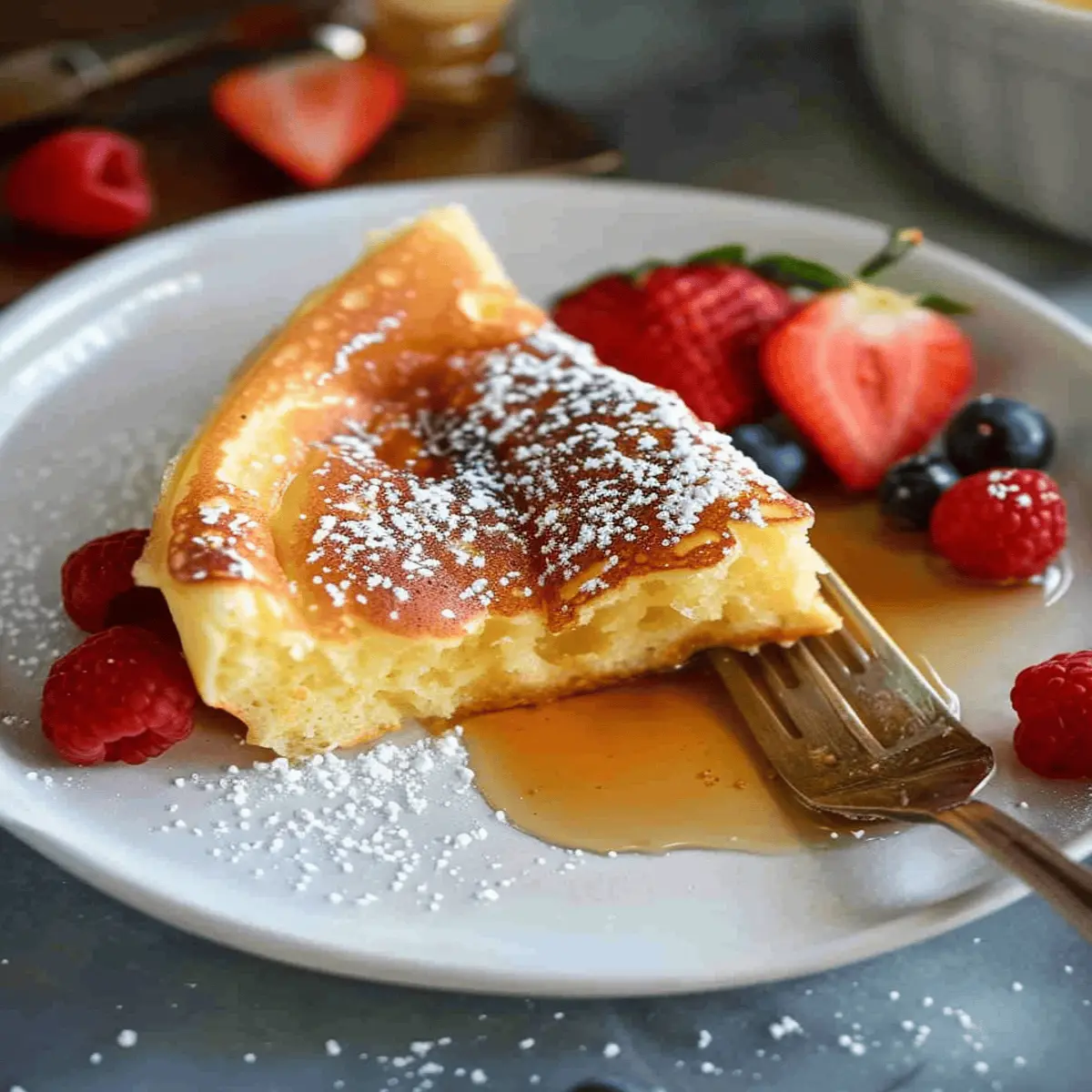
Ingredients for German Pancakes
Essentials for a Classic German Pancake
Creating German pancakes is both simple and rewarding. For a classic version, you’ll need:
- 6 large eggs
- 1 cup all-purpose flour
- 1 cup milk
- 1/4 cup unsalted butter, melted
- 1 teaspoon vanilla extract
- A pinch of salt
These ingredients blend together to form a fluffy, custard-like texture that puffs beautifully in the oven. Did you know that the baking technique used here can result in a dish similar to a Dutch baby pancake? If you’re interested in the science behind it, check out this article on pancake varieties.
Optional Toppings for Extra Flavor
Once you’ve mastered the base recipe, the fun truly begins! Here are some optional toppings to elevate your German pancakes:
- Fresh fruits, like strawberries or blueberries
- A dusting of powdered sugar
- Maple syrup or honey for sweetness
- Whipped cream for a touch of indulgence
Feel free to mix and match based on what you have at home—it’s all about personalization! Have you ever tried apple cinnamon or Nutella as toppings? They can add a delightful twist to your breakfast experience. Experimenting can lead to some tasty surprises!
Preparing German Pancakes
Biting into a warm, fluffy German pancake feels like a little hug from the kitchen. Perfect for brunch gatherings or a cozy breakfast, they’re surprisingly simple to make. Let’s walk through the steps to create this iconic dish that everyone will love!
Preheat your oven and prepare your dish
First things first—preheating is essential! Set your oven to 425°F (220°C). While that’s heating up, grab a 9×13 inch baking dish or a cast-iron skillet, which works beautifully for this recipe. Add a generous amount of butter (about 3 to 4 tablespoons) to the dish. As the oven warms, the butter will melt, creating a delightful base for your pancakes.
Now, why is preheating so crucial? This allows the batter to cook evenly and puff up nicely, creating that airy texture we all adore. Curious about oven preheating? Check out this helpful guide that explains why it’s important for baking.
Mix the batter for a fluffy texture
As the oven preheats, it’s time for the fun part—making the batter! In a large mixing bowl, combine:
- 1 cup of all-purpose flour
- 1 cup of milk
- 4 large eggs
- 1/4 teaspoon salt
- 1 teaspoon vanilla extract
Use a whisk or a blender to mix these ingredients until smooth. You want to avoid lumps, but don’t overmix! The goal is to incorporate air into the batter, achieving that lovely fluffiness. This is key to the German pancakes rising beautifully in the oven.
For a richer flavor, you might even consider using whole milk instead of low-fat or adding a splash of almond extract! Additionally, if you’re curious about dietary alternatives, non-dairy options like oat or soy milk can work too. Just don’t forget to ensure your flour is gluten-free if you’re keeping it that way!
Bake until golden and puffy
Now, carefully pour the batter into the hot, buttered dish. You’ll hear a lovely sizzle as it meets the melted butter. This is what you want! Immediately pop the dish into the preheated oven and bake for about 20 minutes.
As it bakes, you’ll notice the German pancakes rising dramatically. You can peek through the oven door, but avoid opening it frequently—this can make them collapse. Trust the process; they will be gloriously puffed when you pull them out.
Remove and let it settle
Once your pancakes have baked a beautiful golden brown, you’ll want to remove them from the oven. Let them sit for 5 minutes. This settling period allows them to deflate slightly, making it easier for slicing. You may be tempted to dig in right away, but trust me—the wait is worth it, as this minimizes the risk of tearing.
Slice and serve
Now that your German pancake has settled, it’s time to slice. Use a pizza cutter or a sharp knife to portion it into squares or wedges. Serve warm, topped with your choice of delicious options:
- Fresh fruits (like berries or bananas)
- A dusting of powdered sugar
- Maple syrup or honey
- A dollop of whipped cream for that extra indulgence
These pancakes are versatile—you can go classic or get creative with toppings! Why not try adding some lemon zest or cinnamon to your batter for a unique twist?
Enjoy your masterpiece with friends or family, and don’t forget to snap a picture for social media—this dish is just as pleasing to the eye as it is to the palate! And if you’re interested in learning more about the origins or variations of German pancakes, feel free to explore this insightful article that delves deeper into their history and popularity.
In just a short time, you have transformed basic ingredients into a delightful, fluffy treat that’s sure to impress! Happy cooking!
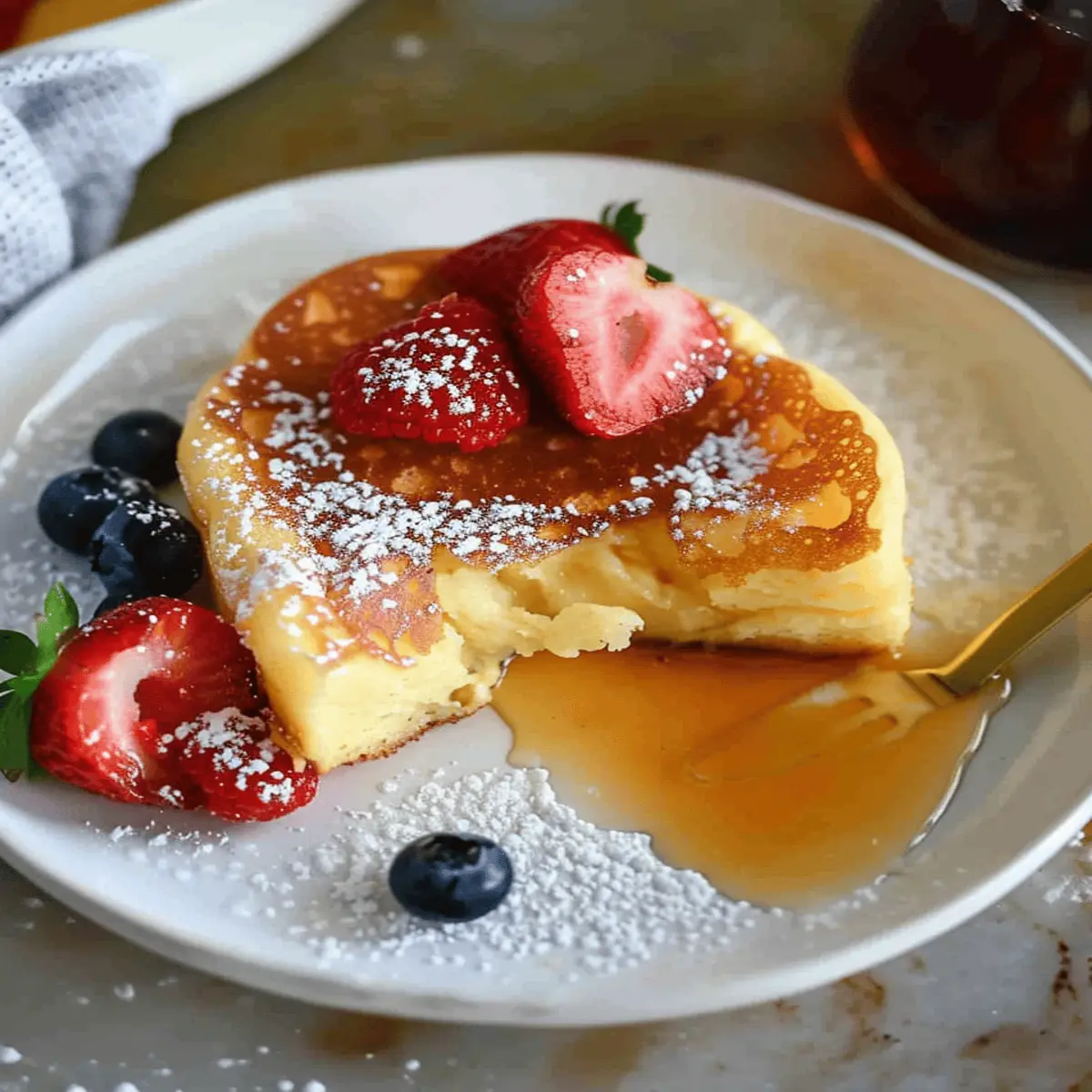
Variations on German Pancakes
German pancakes are incredibly versatile, making them the perfect canvas for a variety of flavors. Here are a few delightful variations that can elevate your breakfast experience to new heights.
Sweet Touch: Cinnamon Sugar German Pancakes
If you’re looking for a comforting twist, consider adding a cinnamon sugar mixture to your German pancakes. Simply mix equal parts sugar and ground cinnamon, then sprinkle it generously over the hot pancakes right after they come out of the oven. This not only adds a sweet crunch but also a fragrant warmth that can make your mornings feel extra cozy. For a more indulgent touch, drizzle a bit of warm maple syrup on top. Yum!
Fresh and Fruity: Fruit-Topped German Pancakes
There’s something magical about the combination of fresh fruits and German pancakes. Top your fluffy creation with sliced bananas, strawberries, or seasonal berries for a burst of color and flavor. You can even sauté fruits like apples or peaches in a bit of butter and brown sugar for a warm topping that feels both sophisticated and comforting. For additional texture, toss in some chopped nuts or a dollop of yogurt. And for more ideas on fruit pairings, check out Bon Appétit’s guide to seasonal fruits.
Savory Delight: Savory German Pancakes with Cheese and Herbs
For those who prefer a savory breakfast, try incorporating cheese and herbs into your German pancakes. Adding grated cheddar, feta, or goat cheese to the batter creates a delightful, rich flavor. Sprinkle in fresh herbs like chives or rosemary before cooking for an aromatic experience that will impress any brunch guest.
With these variations, German pancakes can easily suit any palate, making them a go-to option for any breakfast or brunch gathering!
Cooking Tips and Notes for German Pancakes
Ensuring the perfect puff
To achieve those beautifully puffy German pancakes, a few simple techniques can make all the difference. First, always preheat your oven thoroughly before pouring in the batter; this is crucial for that lofty rise. Additionally, using a hot cast-iron skillet or baking dish will help create steam, giving your pancakes that impressive puff. Don’t forget to blend your batter well for a smooth consistency—clumps can lead to uneven results! For best results, check out this insightful piece on perfecting pancake techniques from Serious Eats.
Troubleshooting common issues
Sometimes, things might not go as planned. If your German pancakes deflate or come out flat, it could be due to the following:
- Underbaking: Allow them enough time in the oven until golden brown.
- Overmixing: Mix just until combined to prevent a dense texture.
- Incorrect oven temperature: An oven thermometer can help ensure accurate temperatures.
Don’t let these common hiccups discourage you—every pancake-making adventure is a learning experience! If you run into issues, remember that practice makes perfect. Happy cooking!
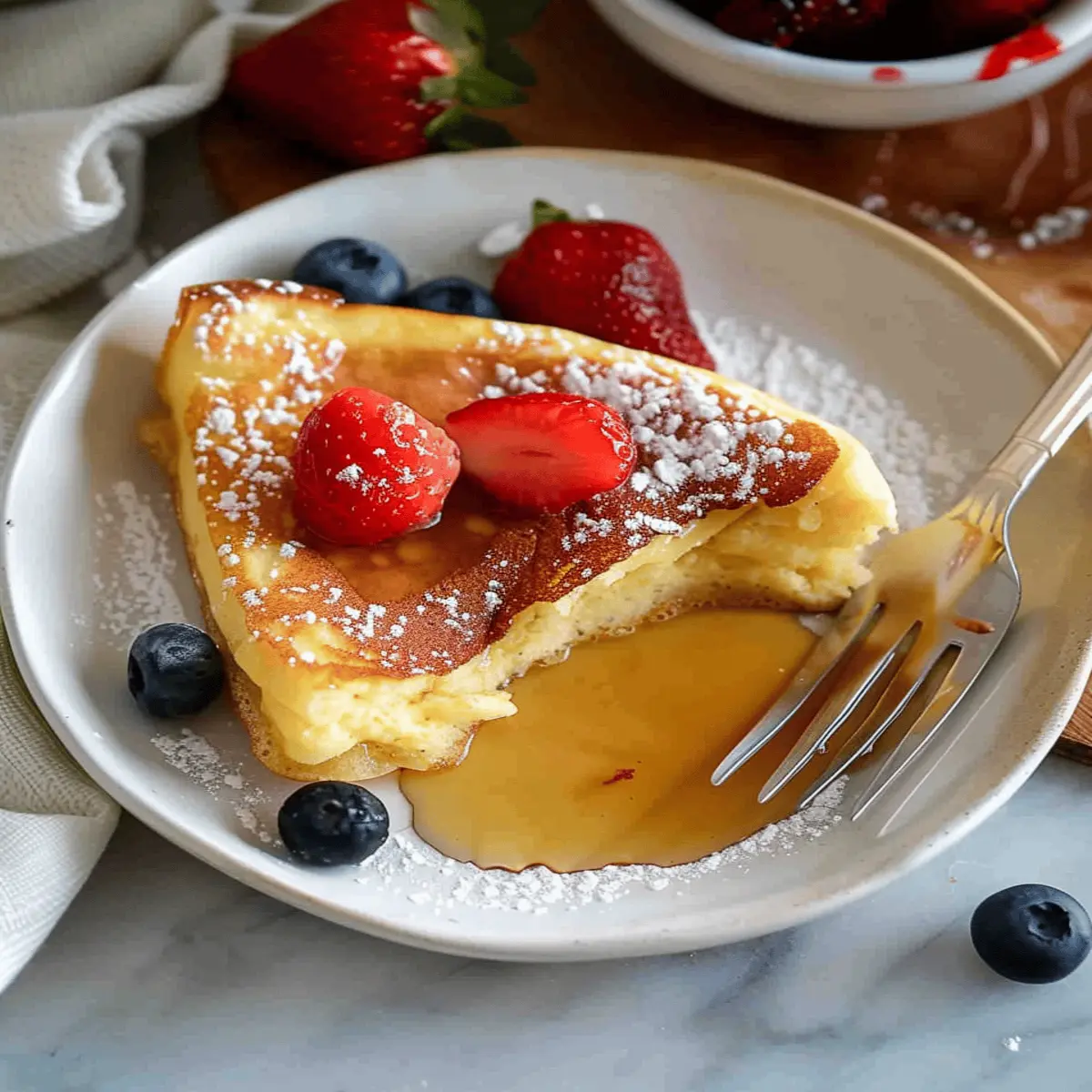
Serving Suggestions for German Pancakes
Pairings for breakfast or brunch
When it comes to serving German pancakes, the possibilities are endless! These fluffy delights pair wonderfully with both sweet and savory toppings. Here are some crowd-pleasers:
- Fresh Berries: Strawberries, blueberries, or raspberries add a burst of color and flavor.
- Maple Syrup: A classic choice that never fails. Drizzle generously for that sweet essence.
- Citrus Zest: A sprinkle of lemon or orange zest enhances the pancakes’ flavor profile beautifully.
- Savory Options: Consider smoked salmon, cream cheese, and a sprinkle of dill for a gourmet twist.
- Nuts and Seeds: Chopped almonds or walnuts add crunch and nutrition.
For more unique ideas, check out this article on brunch plating from Food & Wine.
Creative plating ideas
Presentation can elevate your German pancakes from delicious to dazzling! Here’s how to make your dish visually appealing:
- Stack them high: Layer the pancakes for a towering effect, then add toppings in between.
- Use a plate with depth: A shallow bowl can cradle your pancakes, making them look decadent.
- Topping arrangements: Create patterns or designs with berries, syrups, or whipped cream.
Don’t be afraid to experiment! What’s your favorite combination for German pancakes?
Time Breakdown for German Pancakes
Preparation Time
Let’s start with the basics—preparation time for these delightful German pancakes is about 10 minutes. You’ll want to gather your ingredients and whip up the batter, which is super easy. If you’re feeling fancy, you can mix in some spices or zest for an extra kick, but don’t worry, that’s totally optional.
Baking Time
Once your batter is ready, it’s time to bake. The German pancakes take around 20 minutes in the oven. You’ll know they’re done when they puff up and turn golden brown. Watching them rise is half the fun!
Total Time
In total, you’re looking at about 30 minutes from start to finish. Perfect for those busy mornings when you want something special but don’t have all day to cook. For some helpful tips on achieving the perfect texture, check out this great article by Serious Eats. Now, let’s get flipping!
Nutritional Facts for German Pancakes
When you’re craving a delicious breakfast, German pancakes are a fantastic choice. They’re not just tasty—they’re also pretty nutritious when enjoyed in moderation. Let’s break down the essential nutritional facts you need to know.
Calories per serving
A standard serving of German pancakes contains around 230 calories. This makes them a delightful indulgence, especially when topped with fresh fruits or a drizzle of maple syrup, which can elevate the flavor without significantly adding to the calorie count.
Protein and carbohydrate breakdown
German pancakes provide a good balance of protein and carbohydrates, essential for a high-energy start to your day. You can expect approximately:
- Protein: 6-8 grams per serving
- Carbohydrates: 35 grams
These pancakes are made primarily from eggs, flour, and milk, offering a substantial carbohydrate boost that can keep you satisfied.
Curious about how pancakes fit into your broader dietary goals? This article from Healthline offers insight into balancing carbs and proteins in your meals. Additionally, if you’re looking for alternatives or ways to add more nutrients, consider using whole-grain flour or adding mashed bananas to the batter for extra flavor and nutrition.
Next time you’re whipping up German pancakes, remember that with the right toppings, you can make them even healthier while indulging in that fluffy goodness!
FAQs about German Pancakes
What’s the difference between German pancakes and crepes?
Many people wonder about the distinction between German pancakes and crepes, and it’s a great question! While both are delicious, they have some key differences.
- Thickness: German pancakes are thicker and more robust than the delicate crepes, which are usually very thin.
- Texture: When you bake German pancakes, they puff up in the oven, creating a light, airy texture. Crepes, on the other hand, remain flat and are often filled or rolled.
- Serving Style: German pancakes are typically served as a whole, either topped with fruits or sprinkled with powdered sugar, while crepes are often filled with sweet or savory fillings and folded.
Can I freeze leftover German pancakes?
Absolutely! If you happen to make a batch of German pancakes and have some left, freezing is an excellent option. Here’s how you can do it:
- Make sure the pancakes have completely cooled.
- Place wax paper between the pancakes to avoid them sticking together.
- Store them in an airtight container or freezer bag for up to two months.
When you’re ready to enjoy them again, you can reheat them directly from the freezer in a toaster or oven.
How do I make gluten-free German pancakes?
Making gluten-free German pancakes is quite simple and just as delicious! Here’s a quick guide:
- Substitute regular flour with a 1:1 gluten-free flour blend. Look for brands like Bob’s Red Mill or King Arthur Flour for a reliable option.
- Ensure that your baking powder is gluten-free.
Give it a try! You might be surprised how easy it is to modify this classic recipe and still retain that satisfying puffiness. For additional tips, check out this gluten-free baking resource for more insights and recipes.
Enjoy experimenting with your pancakes and happy cooking!
Conclusion on German Pancakes
Recap of the Joy of Making German Pancakes at Home
Making German pancakes at home is genuinely a delightful experience that can transform any breakfast into a special occasion. The process is simple, allowing you to whip up a dish that feels both indulgent and sophisticated.
- Quick and Easy: With just a handful of ingredients, you can create a fluffy, oven-baked masterpiece that’s fun to make.
- Customization: Top them with anything from fresh fruit to maple syrup, allowing everyone to tailor their experience to their taste buds.
Have you ever stumbled upon a recipe that just clicked? These pancakes often do just that. As you gather your ingredients, think about the warmth of gathering friends or family around the table, sharing not just meals but memories.
For more inspiration on breakfast delights, websites like Serious Eats can offer you a vast array of options to add to your morning menu. So why not treat yourself and your loved ones to the joy of German pancakes this weekend?
German Pancakes: Irresistibly Fluffy & Easy to Make!
German pancakes are deliciously fluffy and perfect for breakfast!
- Prep Time: 10 minutes
- Cook Time: 20 minutes
- Total Time: 30 minutes
- Yield: 4 servings 1x
- Category: Breakfast
- Method: Baking
- Cuisine: German
- Diet: Vegetarian
Ingredients
- 1 cup all-purpose flour
- 1 cup milk
- 6 large eggs
- 1/4 cup butter
- 1/4 teaspoon salt
- 1 teaspoon vanilla extract
Instructions
- Preheat the oven to 425°F (220°C).
- In a blender, combine the flour, milk, eggs, salt, and vanilla extract until smooth.
- Melt the butter in a cast-iron skillet or baking dish in the oven.
- Pour the batter into the hot skillet and bake for 20 minutes or until puffy and golden.
- Remove from the oven, slice, and serve with syrup or toppings of your choice.
Notes
- For extra flavor, add cinnamon or nutmeg to the batter.
- Top with fresh fruits or a dusting of powdered sugar.
Nutrition
- Serving Size: 1 pancake
- Calories: 210
- Sugar: 2g
- Sodium: 180mg
- Fat: 10g
- Saturated Fat: 6g
- Unsaturated Fat: 4g
- Trans Fat: 0g
- Carbohydrates: 25g
- Fiber: 1g
- Protein: 8g
- Cholesterol: 120mg
Keywords: German Pancakes, Fluffy Pancakes, Easy Recipes
